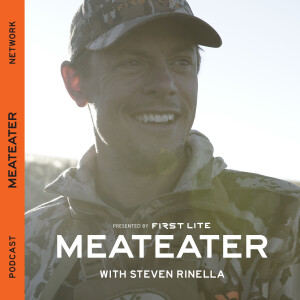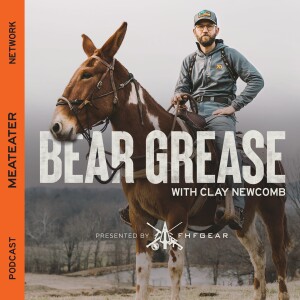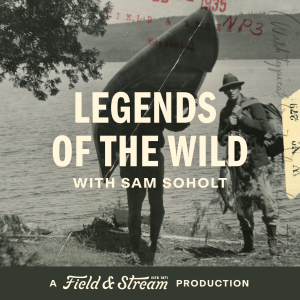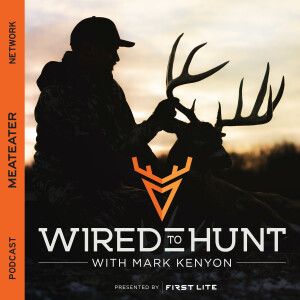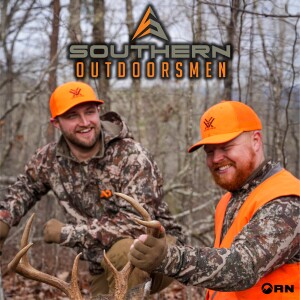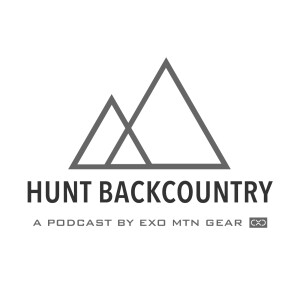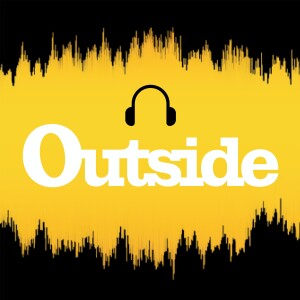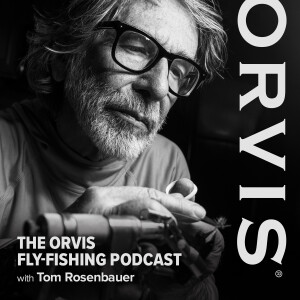

The Orvis Fly-Fishing Podcast
https://orvisffguide.libsyn.com/rssEpisode List

Fly Fishing in Chesapeake Bay, with Scott Barmby
My guest this week is Scott Barmby [35:56], director of the Orvis Chesapeake Fly Fishing Schools, who educates us on threats to the Bay's population of striped bass, and also the many fly-fishing opportunities in the Bay. It's a vast ecosystem that I didn't know much about, so it was interesting to me and I am sure it will be to you. I think you'll learn some surprising things about this national treasure. In the Fly Box this week, we have lots of comments and tips from listeners as well as questions, including: A listener reminds people of the importance of making your presence known on the river A listener gives some other tips for night fishing for trout and smallmouth bass. A listener reminds us that catch-and-release is a valuable tool in certain fisheries, for both management and economic reasons. Do you have any tips on keeping track of what leader you have on your line? Do you think trout that are close to a hiking path avoid that side of the river because they are constantly spooked? A listener wants to know which vintage Orvis reel he should put on a small stream rod. Can you give me some tips on keeping the deer hair on top of the hook shank when tying Sparkle Duns? After making a cast with tight line nymphing, how do I tell when my point fly is on the bottom? Is a 6-weight rod strong enough for Labrador brook trout? Do you know of any way to remove rust from a hook eye to prevent abrasion of the knot?

Mousing at Night for Monster Brown Trout, with Joe Cermele
My guest this week is Joe Cermele [40:00], who you may know from his podcast "Cut and Retie", or from his work over the years at Field & Stream as a writer and videographer. Joe loves hunting big trout, and one of his favorite ways of fishing for them is night fishing with mouse flies. Joe is always fun and informative and I know you'll enjoy this one. In the Fly Box this week, we have some especially interesting questions, including: If I get a 10-foot 5-weight rod for nymph fishing and tight line fishing, will I sacrifice anything when I want to fish with dry flies or streamers? I keep breaking off large carp when they head for structure. Should I use something different than a surgeon's knot? Where do I find past live fly-tying videos and your tie-offs with Tim Flagler and Cheech? A listener who is also an aquatic toxicologist explains why smoke from fires may be deleterious to our rivers and lakes. What can I do to keep googly eyes from falling off my streamers? And do streamers even need eyes to be effective? Hiking the Appalachian Trail, should I take my 7 ½ foot 3-weight or 9-foot 5-weight? Why did a hybrid rainbow/cutthroat I played quickly turn belly-up? Do you think the fly-fishing culture should reflect more deeply on the morality of catch-and-release fishing? Do you have any suggestions for fishing hatches after dark? I typically high-stick with a dry fly and listen for the rise. When water warms up, do trout go into faster water to take advantage of the higher oxygen content?

Back Cast: 15 Tips for Fishing Emergers, with Pat Dorsey
This episode was originally aired on June 16th, 2023. OK, I lied. There aren't 15 tips. There are probably more and if you want to count them up you can e-mail me and correct my mistake. But I get a lot of questions about fishing emergers, and I thought a podcast on how to identify when fish are taking emergers and how to fish them would be welcome. Not only that, world-famous and beloved fishing guide and author Pat Dorsey [36:05] gives us his favorite fly patterns for fishing emergers including a couple secret ones. In the Fly Box this week, we have some thoughtful questions and a few tips from listeners, including: A great tip on casting with your non-dominant hand Will wildfire smoke affect trout populations? If I hear there are native brook trout in a stream, how do I find out where they are? A nice tip on untangling snarls of fly line. Bigger brook trout started taking my nymphs on the swing instead of dead-drifted. How should I take advantage of this next time? How much of an incline in a small mountain stream can trout survive? A listener was disappointed in my podcast with John Gierach because we did not discuss how anglers can have a positive impact on climate change. Two listeners want to know what type of floating line to put on their Euro rods when they switch to dry flies. Why are some articulated streamers tied with the hook down and why are some tied with the hook up? I have a busy life. Am I missing opportunities by not tying my own flies? Brown trout are invasive in my cutthroat stream. Should I take them home to eat them, or just kill them and throw them up on the bank? Is it ethical to back and fish a place on my own if a guide showed me the spot? I have heard if you cut the welded loop off a fly line you can't use it any more because it will absorb water. Is this true?

Who is the Finest Fishing Guide Who Ever Lived? With Monte Burke
My guest this week is one of fly fishing's best writers and storytellers Monte Burke [31:35], whose writing you may have seen in Garden & Gun, Forbes, or The Drake—or perhaps you've read his book, and one of my favorite fishing books, Lords of the Fly. To discover who Monte, and many other people (including me) consider the finest fly-fishing guide who ever lived, you'll have to listen to the podcast. You'll also learn about his new book of stories, Rivers Always Reach the Sea. In the Fly Box this week, we have some questions that I think will help many other fly fishers solve problems they may have, including: A listener informs us about the different grain weights in standard fly lines, and how there is a much bigger percentage difference in lighter lines than heavier ones. What do you think about hooks that get left in a fish's mouth? What would you look for in an ideal brook trout spot? How can I keep panfish from grabbing my carp flies? Is there an advantage to silicone fly boxes over ones with foam strips? If I practice casting with my 4-weight fiberglass rod, will that affect my casting on other rods? How do you use a dubbing loop and when do you use one? The solid metal eyes on my redfish flies sink too quickly. Should I use bead chain or plastic eyes instead? What is it about CDL feathers that make it worth using?

All About Public Lands and a Major Win, with Joel Pedersen of TRCP
We've recently won a big battle for public lands, and my guest this week, Joel Pedersen [25:56] of Theodore Roosevelt Conservation Partnership, fills us in on what we've won and what we need to keep an eye on for the future. But the podcast is much more than that. Joel educates us on the differences between the major classes of public lands—National Forests, BLM land, National Parks, and Wilderness areas and just what uses are allowed on each—and who makes the decision on extractive industries in these vast tracts of land that WE as citizens and taxpayers own. In the Fly Box this week, as usual we have some great questions that might benefit your own fly fishing, including: I'm curious about who might be your successor on the podcast A listener informs us why he thinks a 4-weight rod is a better option for smaller streams than a 3-weight. Why do most of the hook eyes on flies orient horizontally? When would I want a fly with a vertically oriented eye? I have the Orvis Essential Trout Fly Selection. What else would I need for fishing the great Arkansas tailwaters this summer? Another listener asks if a 3-weight or 4-weight rod is better for small streams. When my indicator is bobbing along in riffles, does that action hurt my presentation? A good tip from a listener on how to get a stuck rod apart. What are the pros and cons of using a stand-up paddleboard for carp and pike fishing, and what brand do you recommend? I have not done well fishing as high water recedes. Is this typical?
Create Your Podcast In Minutes
- Full-featured podcast site
- Unlimited storage and bandwidth
- Comprehensive podcast stats
- Distribute to Apple Podcasts, Spotify, and more
- Make money with your podcast
